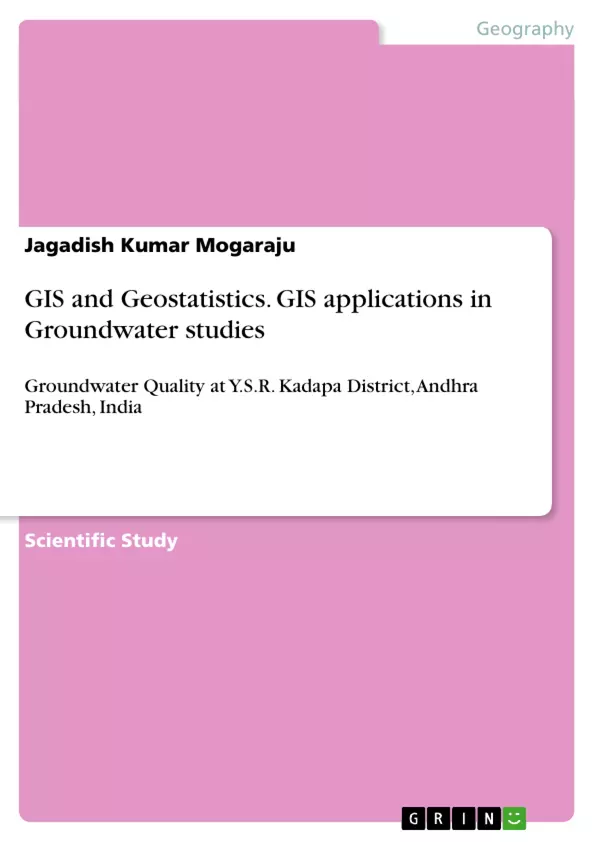Groundwater is a commodity which is intended to be used judiciously whilst protecting its serenity and sanctity in terms of quality and quantity. Ubiquitous utilization in sectors such as industrial, municipal, commercial, agricultural and residential makes groundwater contaminated and converting it as a vulnerable entity. Population growth is in the forefront to create enhanced water demand due to everlasting shortage of surface water and overweening industrialization. Geographic Information Systems (GIS) initiated a beneficial symbiotic relationship with environmental concerns and natural resources in recent times.
Inhaltsverzeichnis (Table of Contents)
- Introduction
- Materials and Methods
- Results and Discussion
- Conclusions
- Illustrations
Zielsetzung und Themenschwerpunkte (Objectives and Key Themes)
This study investigates the groundwater quality in the Y.S.R district of Andhra Pradesh, India. The primary goal is to analyze and represent the spatial distribution of key groundwater quality indices using geostatistical tools and GIS techniques. This involves determining the optimal interpolation technique for accurate prediction of groundwater quality parameters.
- Spatial distribution of groundwater quality indices
- Application of geostatistical tools and GIS techniques
- Optimal interpolation techniques for prediction accuracy
- Evaluation of groundwater quality in Y.S.R district
- Importance of groundwater quality monitoring and mitigation
Zusammenfassung der Kapitel (Chapter Summaries)
The introduction outlines the significance of groundwater quality and the increasing demands placed on this resource due to population growth and industrialization. The study leverages GIS and geostatistical tools to analyze and predict groundwater quality in the Y.S.R district. Chapter 2 describes the study area, data collection methods, and the utilization of ArcGIS Geostatistical Analyst and kriging methods for interpolation. The chapter further explains the principles of kriging and its application in various fields.
Chapter 3 presents the results and discussion. It explores the statistical analysis of the groundwater quality indices, the selection of the best-fit semivariogram models through cross-validation, and the spatial dependence of the parameters. This chapter also provides insights into the prediction accuracy of the chosen models and the spatial distribution of groundwater quality based on the prediction maps generated.
Schlüsselwörter (Keywords)
The study centers around the application of Geostatistical analysis, specifically ordinary kriging, in the context of groundwater quality assessment and spatial representation. Key concepts include semivariograms, prediction maps, spatial dependence, and the use of ArcGIS Geostatistical Analyst. The study area is the Y.S.R district in Andhra Pradesh, India, where groundwater quality is a crucial factor for both urban and peri-urban communities.
- Citar trabajo
- Jagadish Kumar Mogaraju (Autor), 2013, GIS and Geostatistics. GIS applications in Groundwater studies, Múnich, GRIN Verlag, https://www.grin.com/document/268218



